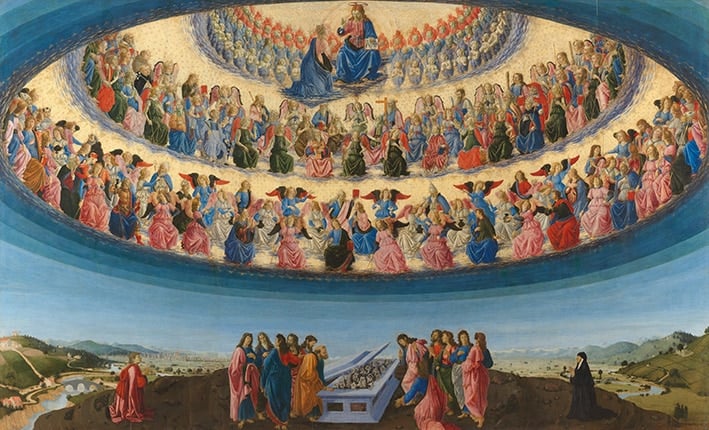
Dear father, do we know from where Our Lady was assumed into heaven?
There are two traditions in this regard. An ancient one says Mary was assumed into heaven in Jerusalem and a more recent one in Ephesus. Let us consider the earlier tradition, which has more credibility.
Among the Jerusalem traditions are some apocryphal writings generically known as Transitus Virginis, “the passing of the Virgin”, or Dormitio Mariae, “the falling asleep of Mary.” It should be remembered that the expression “falling asleep” in the Scriptures and other writings usually means “dying.”
According to these writings, when Our Lady was nearing the end of her life, the apostles gathered around her bed, and Our Lord himself came down and took her soul to heaven. Then the apostles placed her body in a tomb and three days later Our Lord returned and took her body to reunite it with her soul in heaven.
We find echoes of these traditions in several church Fathers. St Gregory of Tours, who died in 594, is the first Western Father to write about the assumption. He hands down information he received from an apocryphal Greek text, which he knew in a fifth-century Latin translation.
He describes how the apostles were with Our Lady when Our Lord came with his angels and took her soul, handing it over to the Archangel Michael. At dawn, the apostles lifted her body onto a pallet, laid it in a tomb, and kept watch over it until Our Lord came and ordered it to be carried up to heaven.
St John Damascene, who died in Jerusalem in the middle of the eighth century, writes in a similar vein. He says Mary died in the Upper Room, after which the apostles prepared her body for burial and carried it on their shoulders in procession from Mount Zion to the Garden of Gethsemane, accompanied by the angels and the whole church.
Today there are two churches in Jerusalem which commemorate these events. The Basilica of the Dormition of Mary, where Our Lady is believed to have died, is located next to the Cenacle on Mount Zion, a hill on the southwest edge of Jerusalem, just outside the walls of the old city. In the second half of the fourth century, a basilica was built there called Holy Zion, and it was considered to be the mother of all churches. It included the Cenacle, or Upper Room, and also the place of the “transit of Our Lady.”
The basilica was destroyed and rebuilt several times in the following centuries, until only the Cenacle itself remained standing, where it is today. The present Basilica of the Dormition was built next to the Cenacle, starting in 1910, by the German Emperor Wilhelm II, who also built a Benedictine abbey alongside it.
The basilica is round in shape and has on its upper floor the main church, crowned by a great dome adorned with beautiful mosaics. The sanctuary is in an apse with a half dome above it, and has a mosaic of the Virgin holding the Child Jesus. On the lower floor is a crypt with a statue of the Blessed Virgin, lying as though asleep, beneath a cupola supported by pillars.
The other church, where Our Lady’s body was believed to have been laid before it was assumed into heaven, is the Basilica of the Tomb of Mary, just to the north of the Garden of Gethsemane, across the Kidron Valley from Jerusalem. It is about a 25-minute walk from the Cenacle. It is called the Church of the Assumption by the Greek Orthodox and other Orthodox churches who have certain rights over it.
The tomb in the basilica is two long flights of stairs below the present street level, owing to the fact that the Kidron riverbed has risen substantially over the centuries and also because the building today was probably the crypt of the earlier basilica, built in the fourth or fifth century. Archaeological excavations in the 1970s revealed that the tomb where Our Lady’s body was laid was part of a first-century burial site. The central focus of the basilica is a small chapel over the place where, according to the tradition, Our Lady’s tomb was carved out of the rock.
